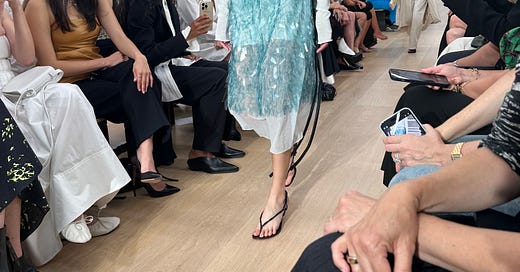New York Fashion Week: The knowns, unknowns and its groove
Field notes from the ground and my phone screen
I think it’s safe to say that there are two kinds of designers who show on the New York calendar and I’m not sure if it’s fair to call them old guard vs. new guard, because it’s not really about that, but from the first group, what is apparent is that most of the ideas being presented and iterated upon are reflective of the broader, international moveme…
Keep reading with a 7-day free trial
Subscribe to The Cereal Aisle by Leandra Medine Cohen to keep reading this post and get 7 days of free access to the full post archives.



